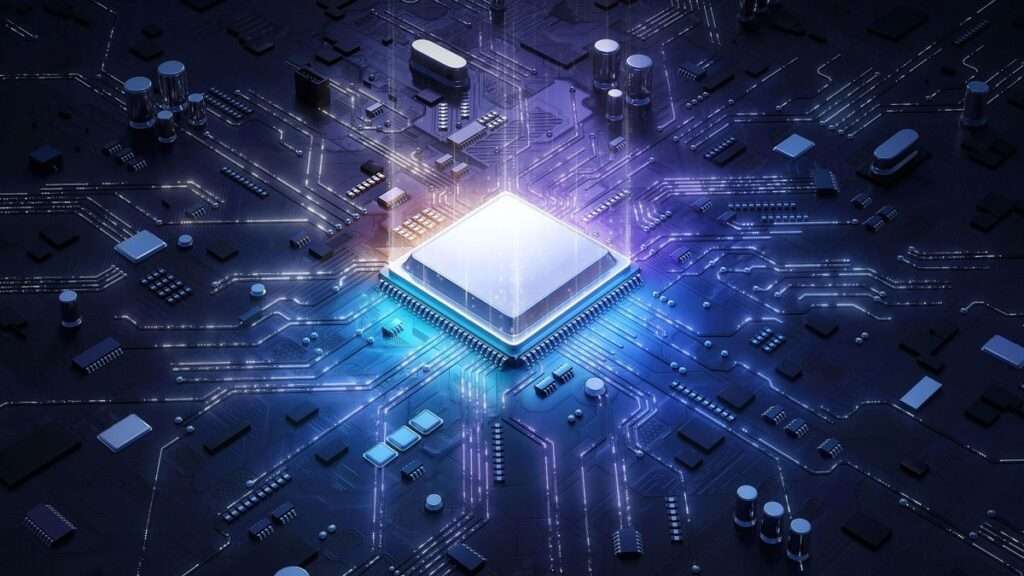Intel Corporation, a leader in the computer processor industry for decades, has unveiled its latest Core Ultra processors, promising groundbreaking advancements in laptop battery life and artificial intelligence (AI) capabilities.
This announcement was made during the Consumer Electronics Show (CES), a pivotal event in the technology calendar, signaling Intel’s efforts to reclaim its competitive edge in the market.
The new processors are set to revolutionize the market by offering unparalleled battery efficiency. According to Intel, laptops powered by these chips can deliver exceptional performance under demanding conditions. For instance, an HP laptop using the new Core Ultra processor can support Microsoft Teams for an impressive 10.5 hours on a single charge. When running Microsoft’s cloud-based 365 suite, the battery life extends to an astounding 20.3 hours.
By comparison, Intel claims that laptops equipped with Qualcomm’s Snapdragon processors last up to 9.2 hours and 18.5 hours under the same conditions. This marked improvement positions Intel’s new chips as a game-changer for both corporate and high-end consumer devices, catering to the growing demand for reliable, long-lasting performance.
Beyond battery efficiency, Intel’s new chips emphasize enhanced AI functionality, a critical factor for modern computing needs. These processors reportedly outperform competitors in applications that rely on generative AI, an area of increasing significance for both personal and professional computing.

Intel has also shared its roadmap for the Arrow Lake and Lunar Lake processor designs, set to debut in 2025. Initially targeting business devices, these processors will later expand to thin and light laptops, high-performance notebooks, and desktop PCs.
Intel’s Struggles and Strategic Response
While Intel remains a dominant force in the PC processor market with over 70% market share for its X86 chip standard, its position has faced significant challenges. Production delays and sluggish product launches have allowed competitors like Advanced Micro Devices Inc. (AMD) to gain traction.
Moreover, the rise of new entrants, particularly those leveraging Arm Holdings Plc technology, has further intensified competition. Qualcomm, for example, aims to replicate Apple Inc.’s success in introducing Arm-based chips to laptops. Proponents of this technology argue that Arm-based chips are inherently more power-efficient, leading to extended battery life—an essential feature for modern laptops.
Intel’s new processors arrive at a time when Arm technology is gaining traction. Already a standard in smartphones, Arm-based chips are being increasingly adopted in the PC market, threatening Intel’s dominance. Several companies are preparing to launch PC chips built on Arm’s architecture, which is lauded for its energy efficiency and performance optimization.
Qualcomm, a major player in the Arm ecosystem, is positioning its Snapdragon processors as a viable alternative for laptops, further challenging Intel’s supremacy. In response, Intel’s new chips aim to close the gap by offering not only improved battery performance but also unmatched AI processing capabilities.
Intel’s announcement is part of a broader strategy to rejuvenate its product lineup and strengthen its market position. Following a leadership shake-up last month, the company is doubling down on innovation to address its weaknesses and capitalize on emerging trends.
The introduction of the Core Ultra processors underscores Intel’s commitment to delivering cutting-edge solutions for modern computing challenges. By focusing on battery life and AI performance, Intel is aligning its products with the evolving demands of consumers and businesses alike.
As Intel rolls out its latest processors, the implications for the PC market are profound. The extended battery life offered by Core Ultra chips could redefine user expectations, setting a new standard for laptop performance. Additionally, the enhanced AI capabilities provide a significant advantage in a landscape where machine learning and data-driven applications are becoming ubiquitous.
However, Intel faces an uphill battle against competitors like AMD, Qualcomm, and other newcomers leveraging Arm technology. The success of Intel’s new chips will depend on their ability to consistently deliver on promises and regain the trust of consumers and corporate clients.
READ ALSO: Ghana Missing on the List of Top 10 African Countries Leading in Private Sector Investments



















